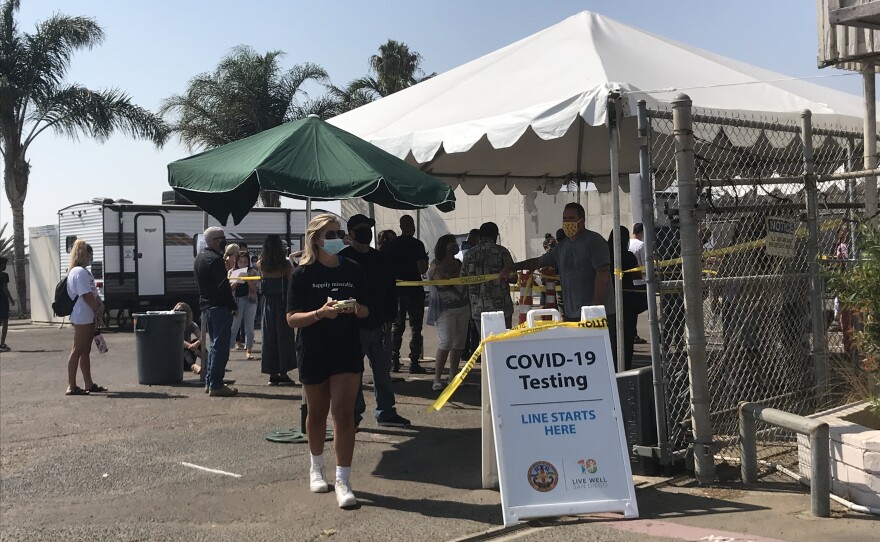San Diego County awaited fresh data from the state Tuesday to see if it will avoid being pushed back into the most restrictive "purple tier."
Last Tuesday, the county narrowly avoiding being pushed back into "purple" tier, the strictest in the state's four-tier reopening plan. The county is currently in the red tier for COVID-19 cases, with a state-adjusted case rate of 6.7 per 100,000 residents and a testing positivity percentage of 3.5%.
California officials announced changes to the monitoring system for counties last Tuesday. County public health officials said their unadjusted case rate last Tuesday was 7.2, above the state-set threshold of 7.0. However, because testing levels were above the state median testing volume, the county's adjustment level was decreased.
County public health officials reported 224 new COVID-19 infections on Monday, bringing the cumulative number of cases to 48,660, while the death total remained unchanged at 803.
Of the 6,577 tests reported Monday, 3% returned positive, bringing the 14-day rolling average percentage of positive cases to 3%. The state-set target is less than 8%. The seven-day daily average of tests was 9,307.
Of the total number of cases in the county, 3,585 — or 7.4% — have required hospitalization and 832 — or 1.7% of all cases — had to be admitted to an intensive care unit.
None of the 224 cases reported Monday are connected to San Diego State University, but seven previously reported confirmed cases are now associated with the school outbreak, bringing the total number of SDSU cases to 1,134, according to public health officials.
Those seven cases were previously reported to the San Diego County Health and Human Services Agency, but only recently identified — through continued cross-referencing between SDSU and the HHSA — as having an SDSU affiliation.
A total of 407 on-campus students, 704 off-campus students, 10 faculty or staff and 13 visitors have either confirmed or probable positive COVID- 19 diagnoses. Officials said 53 of the total are considered "probable."
SDSU announced last Wednesday that it was extending a pause on in- person courses through Oct. 12. Effective that day, a limited number of courses will resume in person. Most of those courses are upper-division or graduate level, and have been "determined by faculty and academic leaders to be essential to student degree completion, licensure, and career preparation," university officials said in a statement.
About 2,100 students will be enrolled in an in-person course. Prior to the in-person pause, 6,200 students were enrolled in an in-person course.
In the seven-day period from Sept. 28 through Sunday, 23 community outbreaks were confirmed, well above the trigger of seven or more in seven days. A community setting outbreak is defined as three or more COVID-19 cases in a setting and in people of different households over the past 14 days.
The county has expanded its total testing sites to 41 locations, and school staff, including teachers, cafeteria workers, janitors and bus drivers, can be tested for free at any one of those sites. A rotating testing program with the California Department of Forestry and Fire Protection was in the works for schools in the county's rural areas.
There are no state testing requirements for children, but all school staff who interact with children must be tested every two months. If schools were to open before San Diego County headed to a more restrictive tier in the state's monitoring system, they would not be affected. However, if a move to a different tier happened before schools opened for in-person learning, it would change the game plan, county Supervisor Nathan Fletcher said.
If parents want to test their children for the illness, they have options, including Rady Children's Hospital, through Kaiser Permanente or through the 41 sites the county manages. Children as young as 6 months can be tested at the county-run sites.







